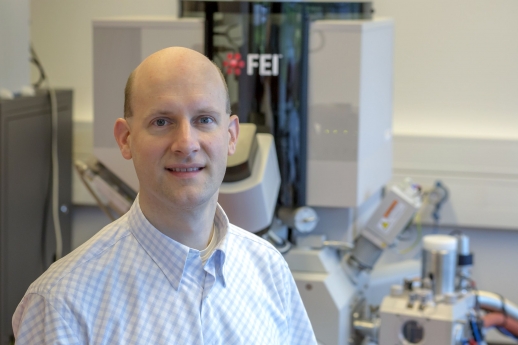
Prof. dr. ir. Marijn van Huis
Leonard S. Ornstein Laboratory, room 0.57
Princetonplein 1, 3584 CC Utrecht
P.O. Box 80 000, 3508 TA Utrecht
The Netherlands
phone: +31(0)30 253 2850
secretariat: +31(0)30 253 2952
e-mail: m.a.vanhuis@uu.nl
Research
Dr. Marijn van Huis heeft een tenure positie (UD) aan de Universiteit Utrecht (Soft Condensed Matter, Debye Institute for Nanomaterials Science). Hij is expert op het gebied van transmissie electronenmicroscopie (TEM) en density functional theory (DFT) berekeningen. Hij past deze experimentele en theoretische methodes toe op nanodeeltjes en nanokristallen die bijzondere fysische eigenschappen hebben.
The Nanostructure Team
Op dit moment leid ik een onderzoekseenheid die gericht is op het onthullen van de atomaire structuur van nanomaterialen, gebruik makend van zowel experimentele als simulatie-tools. Het Nanostructure Team bestaat uit: dr. Changming Fang(2011-2013), dr. Yang Liu (postdoc sep 14 – dec 16; Geoscience dec 17), en Anil Yalcin, Rik Koster (promotie februari 2017), Wun-Fan Li (promotie mei 2017; postdoc tot maart 2018), Somil Gupta, Wessel Vlug (promotie november 2017), Carlo van Overbeek en Joep Peters (promovendi), Tom Welling (februari 2017-2021), Xiaodan Chen en Dnyaneshwar Gavhane (promovendi maart 2017-2021).
Dr. Moumita Ghosh, (gast mei 2017-mei 2018).
Research interests
Colloidal heterogeneous nanostructures are a novel class of materials with outstanding, and often tuneable, physical properties. However, as these materials are synthesized under wet chemical conditions (in solutions), they are unstable outside the solution and undergo structural transformations upon heating at low temperature, or upon irradiation with light or electrons. Currently, these effects are not well understood at all. It is my goal to identify and develop physical mechanisms that can be employed for stabilization or manipulation of heterogeneous nanostructures outside the solution in which they are synthesized. For that purpose, I perform experiments inside the transmission electron microscope (TEM). Through recently developed ground-breaking technology, transitions at elevated temperatures can now be imaged with atomic resolution and in real time.
In conjunction with the experiments, detailed quantum mechanical and semi-empirical atomistic simulations are conducted to unravel the energetics of the atomic-scale reconstruction mechanisms. I strongly feel that experiment and theory need to be combined in an adequate way in order to establish structure-property relationships and to identify the relevant driving forces for the transformations. Apart from durable use of nanostructures in opto-electronic and biomedical applications, understanding of these nanoscale transformations will enable to find and design new types of nanostructures with novel functionalities.
Strategische thema’s / focusgebieden
Betrokken bij de opleiding(en)
Wetenschappelijke expertises
Cation exchange in PbSe-CdSe nanostructures recorded in-situ in the TEM (A.O. Yalcin et al, Nano Lett. 14 (2014) 3661-3667)
Chemical mapping (STEM-EDS) of CdS nanorods with Au tips (top) which after electron irradiation transform to AuS/Cd core/shell nanostructures (M.A. van Huis et al., Nano Lett 11 (2011) 4555-4561).
The MEMS microheater that is mounted on a TEM specimen holder to achieve atomic resolution even at temperatures of 1000 K (M.A. van Huis et al, Adv. Mater 21 (2009) 4992-4995).
Thermal ripening of various CdSe/Au nanorod/nanodot configurations (A. Figuerola, M.A. van Huis, et al., Nano Lett 10 (2010) 418-421).
Molecular dynamics simulation of the fusion of PbSe nanocrystals (P. Schapotschnikow, M.A. van Huis, H.W. Zandbergen, D. Vanmaekelbergh, T.J.H. Vlugt, Nano letters 10 (2010) 3966-3971).
Cover of the Nanotechnology Magazine (A.O. Yalcin et al., Nanotechnology 25 (2014) 055601).
Morphological transformations of a single gold nanoparticle (9 nm) at a temperature of 450 °C (N.P. Young et al, Ultramicroscopy 110 (2010) 506-516).
A wide variety of nanomaterials are investigated: Fused PbSe domains, 2D arrays of nanoparticles, and Mg nanodendrites on MgO
